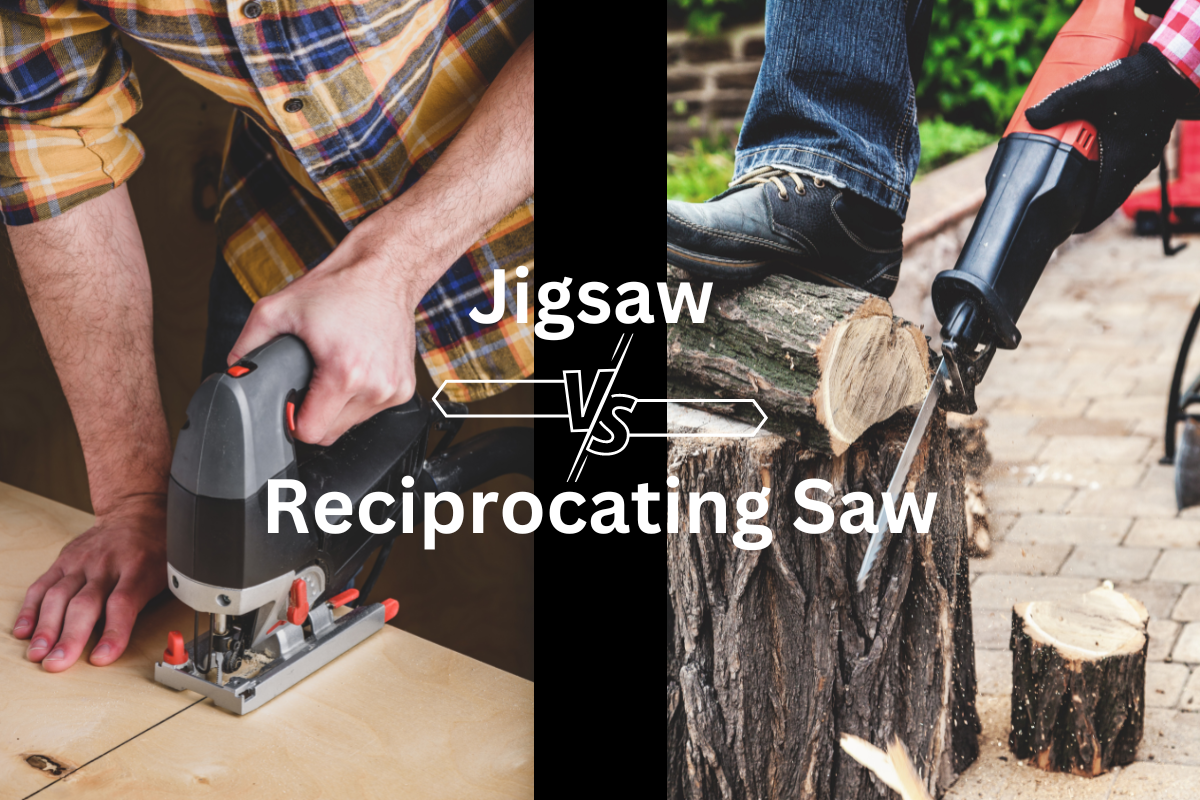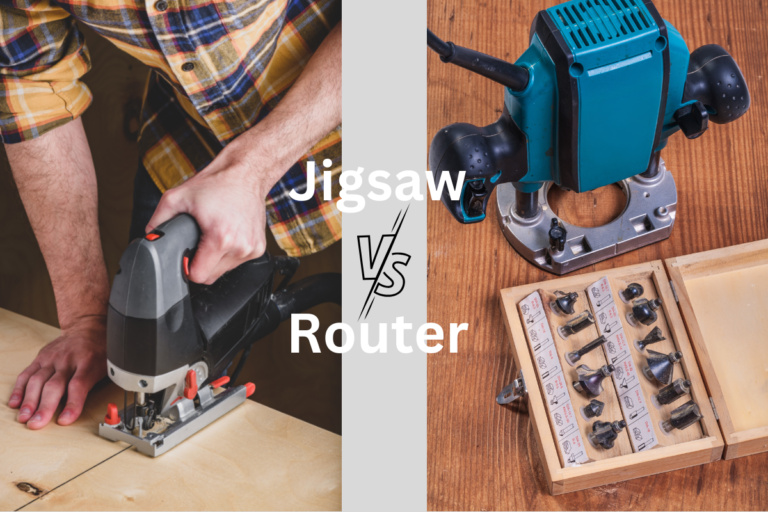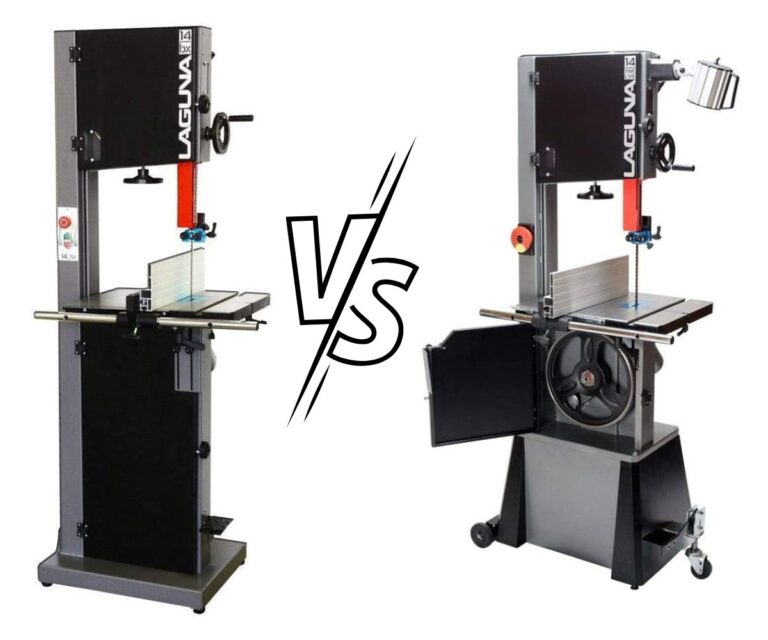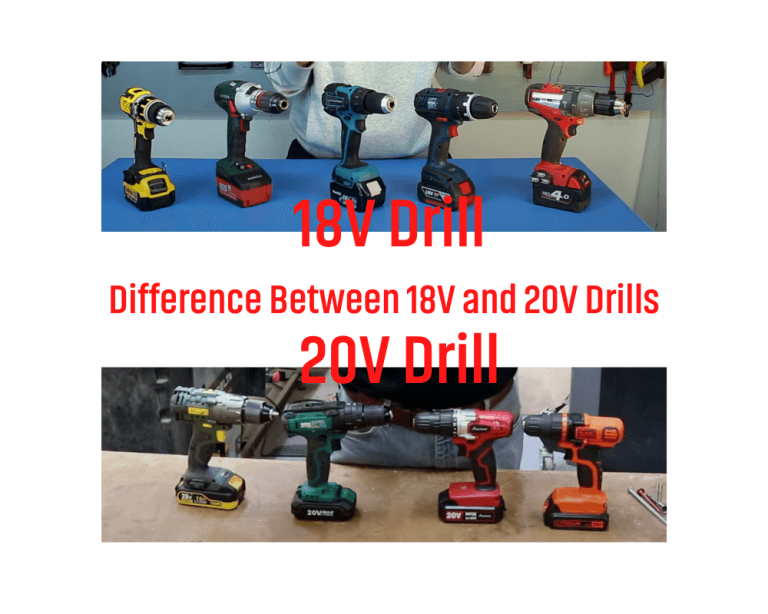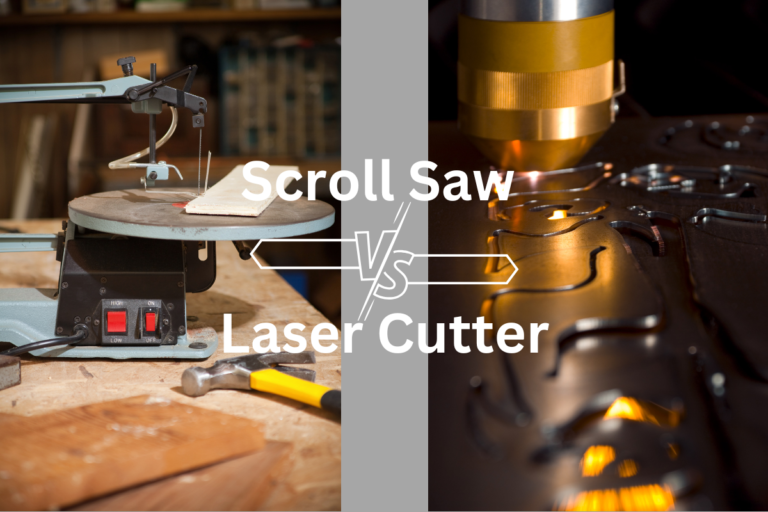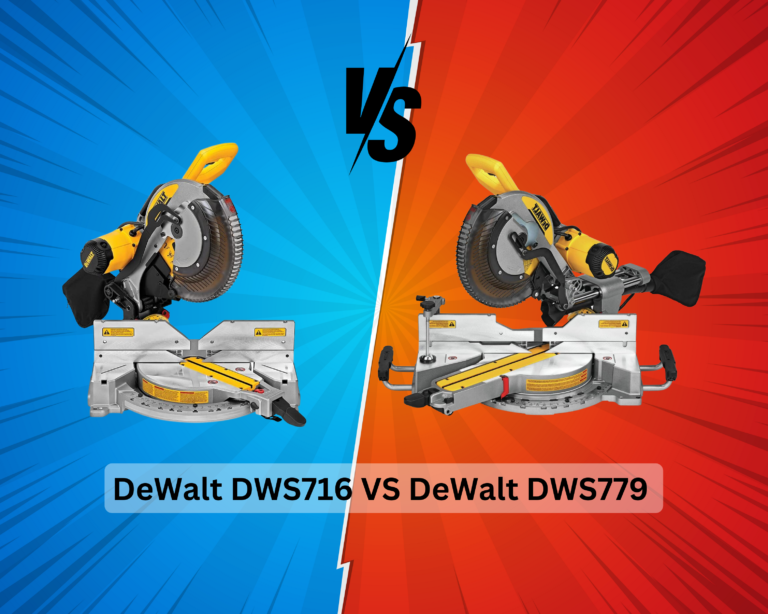Jigsaw vs Reciprocating Saw – Let’s Clear the confusion!
As an Amazon Associate I earn from qualifying purchases.
A jigsaw and a reciprocating saw are both small, handheld woodworking tools that have their own advantages and disadvantages for providing different cuts on different materials.
A jigsaw allows for more delicate, intricate, and curved horizontal cuts with greater control and accuracy at a lower cost. Whereas a reciprocating saw makes rough cuts both horizontally and vertically, better handles heavy-duty cutting, and is more versatile.
As a beginner, it’s hard to identify which one is needed in which context. So let us compare and contrast jigsaw vs reciprocating saw in detail so that you can choose one based on your work.
Note: A reciprocating saw, also known as a “Sawzall,” is just a brand name introduced by Milwaukee Tool Company, and the design is the same as the reciprocating saw, making this comparison between Jigsaw vs Sawzall.
Contents
Comparison Table Between Jigsaw vs Reciprocating Saw
| Features | Jigsaw | Reciprocating saw |
| Speed | Fast | Faster |
| Blade type | T-shank and U-shank | Universal Sabre shank |
| Main purpose | Cutting and shaping | Demolition and remodeling |
| Power supply | Corded and cordless | Corded and cordless |
| Cut quality | Rough | Smooth |
| Cuts | Vertically | Horizontally and vertically |
| Inside cut | Yes | Yes |
| Curve cut | Better | Average |
| Straight cut | Better | Average |
| Deep cut | Less deep | Deeper |
| Round edges | No | No |
| Changing blades | Easy | Easy |
| Weight | More | Less |
| Safety | Good | Better |
| Maintenance | Easy | Easy |
| Portable | Yes | Yes |
| Price | More Affordable | Affordable |
I recommend you try these reciprocating saw and jigsaw to choose the best one for you.
Pros and Cons Between JIgsaw and Reciprocating saw
Jigsaw
A jigsaw is a handheld saw that works on a push-and-pull blade mechanism. Though the jigsaw blade runs slower than a reciprocating saw, it easily cuts through any thin or thick material and ensures more complex cuts.
It is available as a corded and cordless handsaw for easy portability.
Reciprocating Saw
As with the jigsaw, a reciprocating saw is also a handheld tool that works on a push-and-pull blade mechanism. But it runs faster than a jigsaw and is best for thicker material and heavy-duty cutting.
Though it is larger than a jigsaw, it comes in both corded and cordless versions for easy portability.
Differences between Reciprocating saw and Jigsaw
Design
A jigsaw comes in a compact, vertical C-shape design, whereas the reciprocating saw is a much larger tool that comes in a horizontal, hognose design.
Blade
A jigsaw uses mainly T-Shank and U-Shank design blades, whereas a reciprocating saw uses a universal Sabre Shank blade, which needs to be set using the screw in a mounting hole that causes breakage.
Note: A jigsaw blade with a U-Shank design blade also needs to be mounted like a reciprocating saw blade.
Blade movement or speed
Both saw blades work on a push-and-pull blade mechanism, but the reciprocating saw generates up to 15amp power better than the jigsaw 7.2amp power that moves the reciprocating saw blade at a faster speed than the jigsaw blade.
Blade change
Both saws make changing the blade easier, but the Jigsaw T-shank design makes it much easier, you just have to spin the spring-loaded clamp and place the blade.
Whereas the jigsaw U-shank and reciprocating saw universal blade needed to unscrew to put out the older one and install the new one by turning on the opposite or tightening the screw.
Operating
A recip saw can operatable in both horizontal and vertical directions as its blade teeth are in a lower direction.
In contrast, a jigsaw can operatable only in a vertical direction and needed a flat surface to work as the blade teeth are in the upper direction it can’t cut horizontally.
Usage
A jigsaw can be used to make shapes, straight lines, angle lines, more intricate, and curve cuts. In comparison, a reciprocating saw can do almost most of the jigsaw cuts but less delicately than a jigsaw.
Cuts
Depending on the teeth size and blade material, both a jigsaw and reciprocating saw can cut wood, plywood, plastic, metal, and ceramic tile. But for the slower speed of the blade movement, a jigsaw will provide a smoother, more precious, and finer cut while making shapes and complicated cuts than a reciprocating saw.
Though the cut will be rough, you can cut faster and tougher materials and places, like on a vertical wall, the tiniest layers of the window frame, pruning trees, and awkward spaces.
Depth of cuts
Depending on their blade sizes, both can be used for cutting thin and thick materials. For example, a jigsaw blade can be 3 to 10 inches long to cut a maximum of 6 inches thick material.
Whereas a reciprocating saw blade can be 3 to 12 inches long to cut a maximum of 10 inches thick material deeper than a jigsaw.
Weight and size
A reciprocating saw’s size and weight are larger than a jigsaw. Because a reciprocating saw mostly cuts horizontally and lacks the ability to cut flooring, it feels heavier than a jigsaw.
Versatility
Each saw is versatile as they are portable and easily holdable in the hand while cutting and making cuts on almost the same types of materials. But on a reciprocating saw, you can make a cut anywhere, which you can do on a jigsaw.
Accuracy
A reciprocating saw blade moves and cuts faster than a jigsaw but with less speed; a jigsaw has more accuracy than a reciprocating saw. It means a jigsaw makes precious cuts and provides more straight, more intricate, and curve cuts.
Burning
A reciprocating saw blade moves faster than a jigsaw that generates more heat which can cause burn marks while cutting thick materials.
Safety
As you have to hold them while cutting for that anytime a finger can get in touch with the blade and cause damage. But if you work consciously, both are safer saws.
Price
A jigsaw is more affordable than a reciprocating saw. An average and good quality jigsaw and reciprocating saw will cost you between $50 to $250.
Which One should I choose: Jigsaw or Reciprocating Saw
A reciprocating saw and a jigsaw does have a lot of similarities in usage and cutting materials, but a reciprocating saw cuts deeper, is more versatile, and can handle a heavier workload than a jigsaw.
On the other hand, a jigsaw has greater accuracy, which means greater control and more precise, intricate, and curvy cuts with less burning and a lower price.
Another thing is that depending on the working usage, you can use a reciprocating saw instead of a jigsaw as it works both horizontally and vertically, but while working horizontally, you can’t use a jigsaw instead of a reciprocating saw.
Frequently Asked Questions
Can you cut straight with a reciprocating saw?
Yes, you can cut straight with a reciprocating saw. Not just straight, you can have accurate and fine cuts with this saw.
For straight cuts, mark a line where you want to cut, then take a straight wood piece and place it on the other side of the marked line. Then, with both hands, grip and hold the reciprocating saw and slide it along with the straight wood piece.
Note: If possible, cut horizontally to have a more straight, accurate, and fine cut.
Can a reciprocating saw cut through screws?
Yes, a reciprocating saw can cut through screws. A reciprocating saw has a powerful motor to move the blade really fast. Also, this saw blade is made with quality material and comes with a higher tooth blade; with these capabilities and advantages, it is easier to cut through screws and other metal materials.
Note: Use old blades to cut screws or metal materials to avoid damaging new blades.
Does cutting vertically or horizontally make reciprocating sawing easier?
A horizontal cut is easier than a vertical cut on a reciprocating saw. On a horizontal cut, it is easier to follow the line and adjust your movement freely, which you can’t do vertically because here, you have to manage the full weight of the saw and balance your hand against the vibration.
Conclusion
The reciprocating saw and jigsaw are small handheld saws that have the advantage of cutting instantly large saws for free use and portability to cut the materials you need.
Both are good and useful in their specific cutting capabilities, which I described earlier by comparing both of these saws. It is now up to you to choose one that is appropriate for your project in order to achieve the best results. Thank you.

